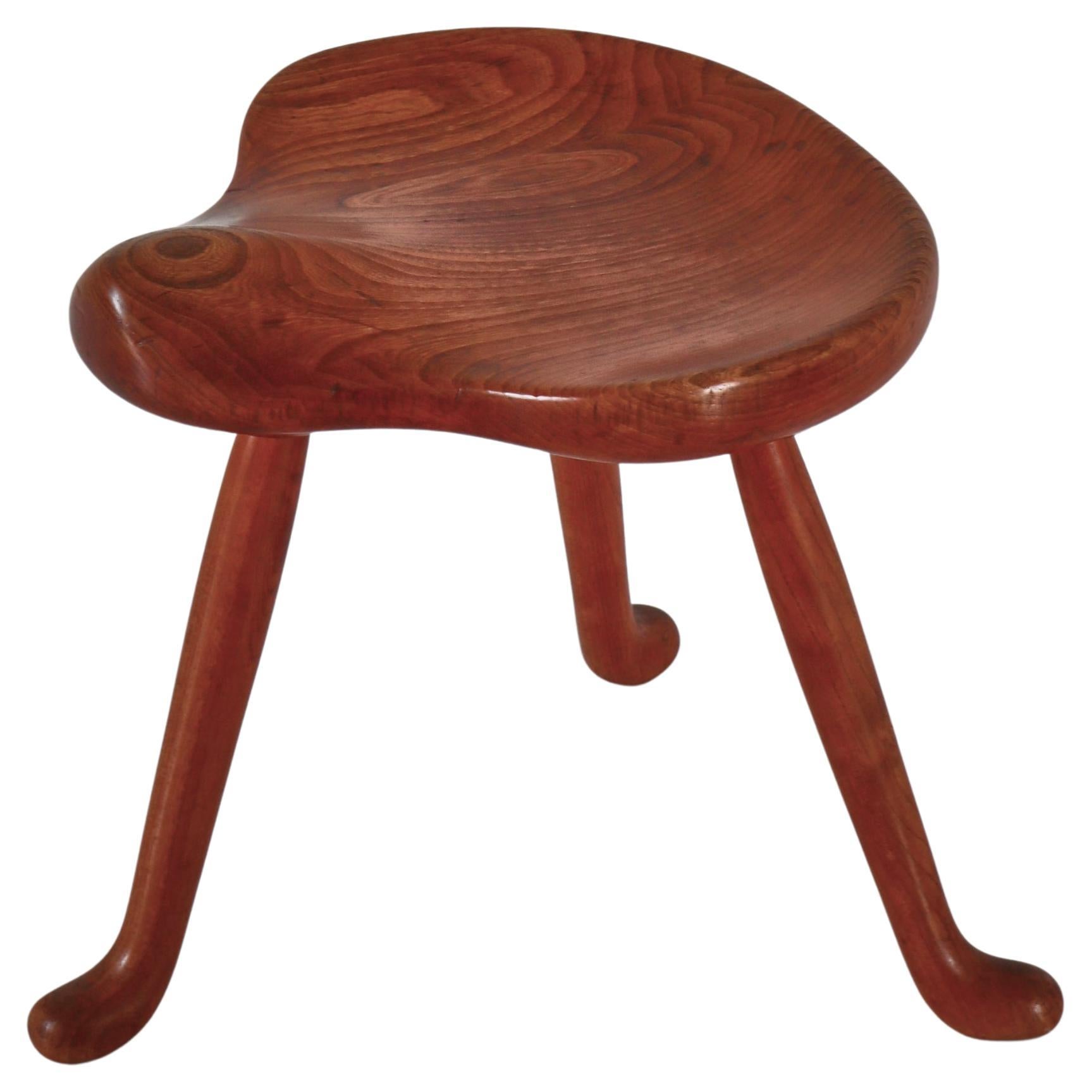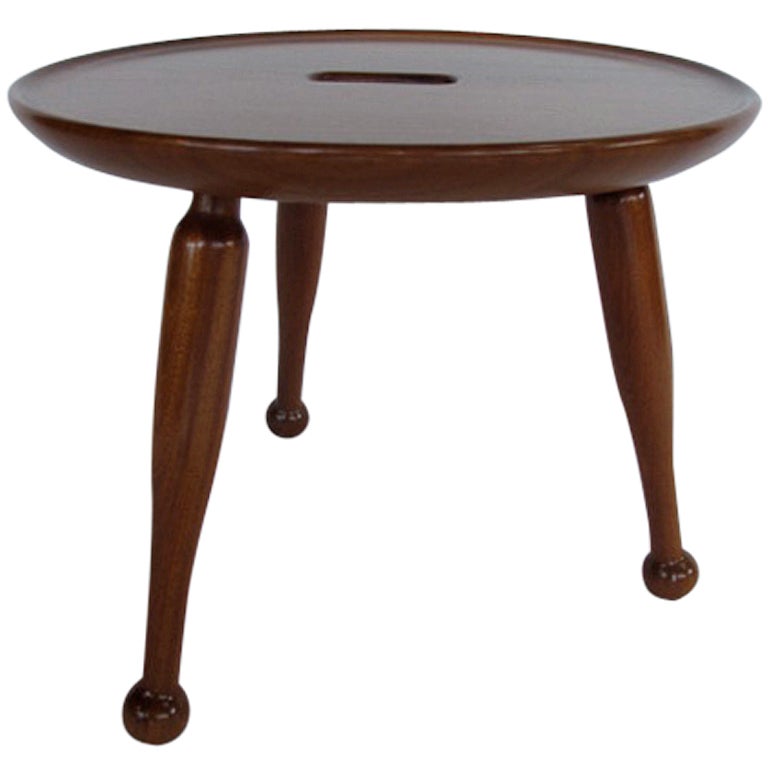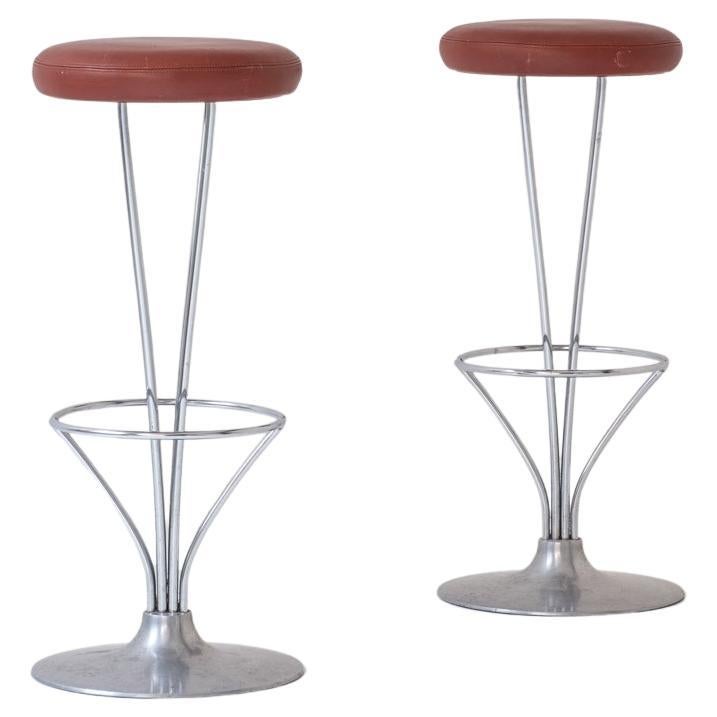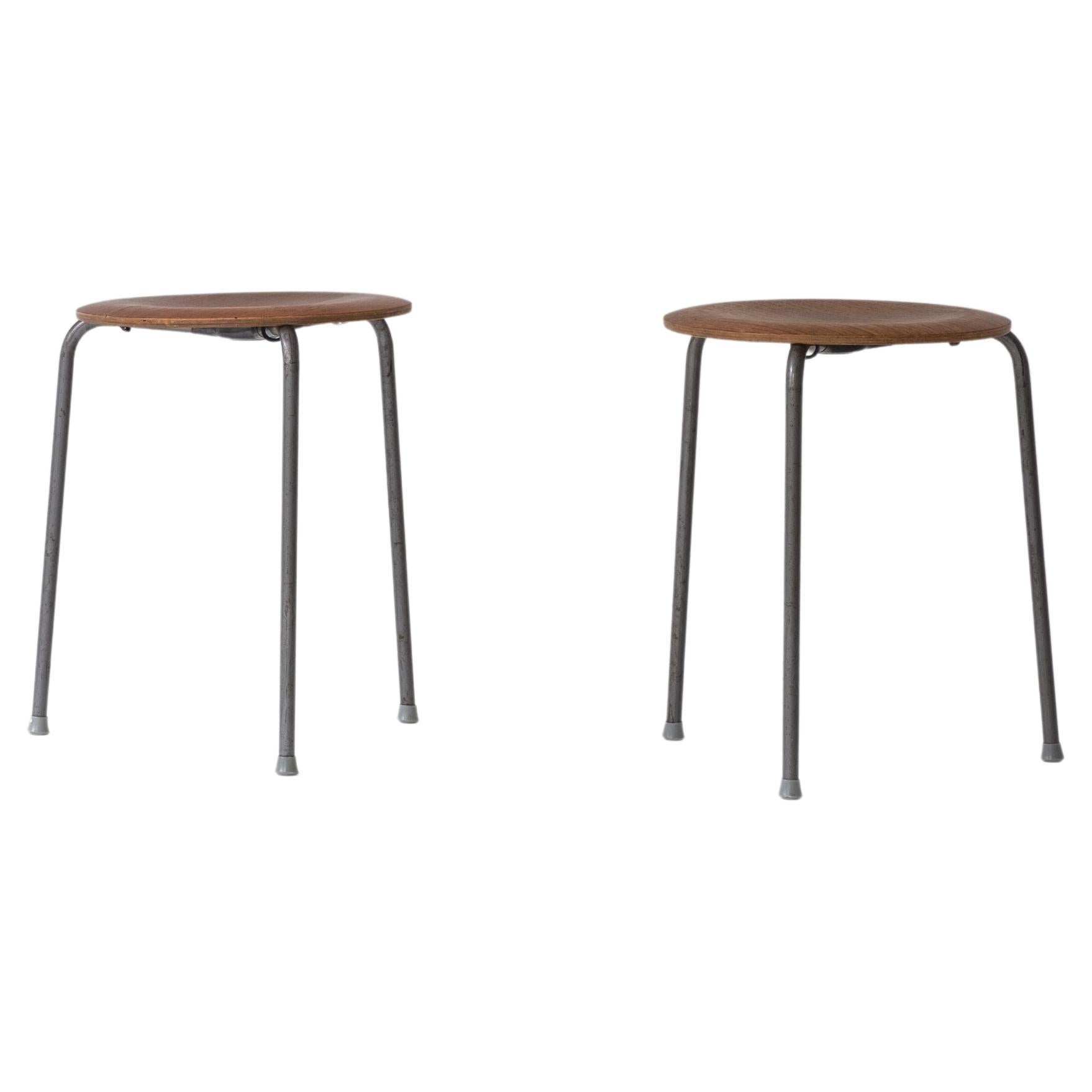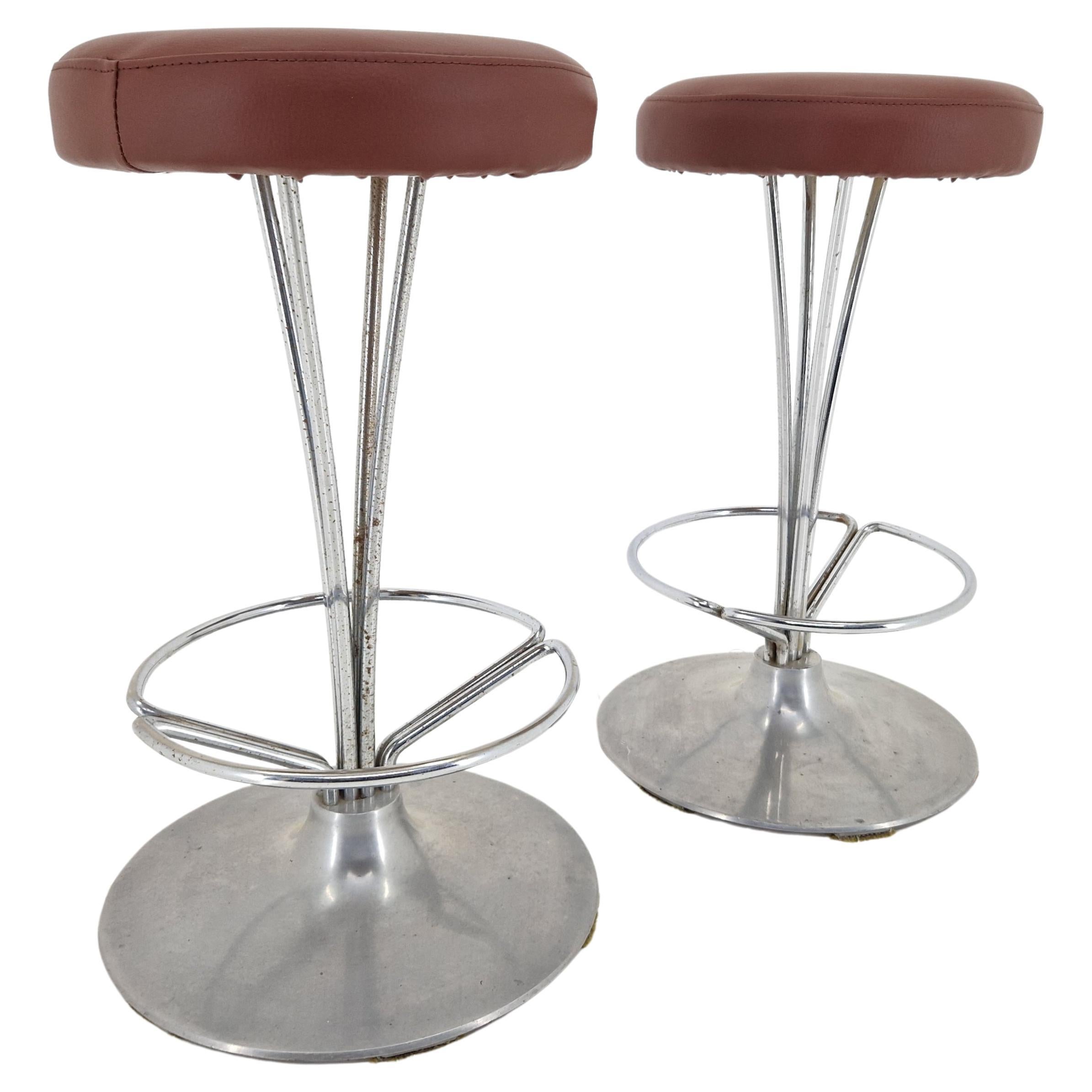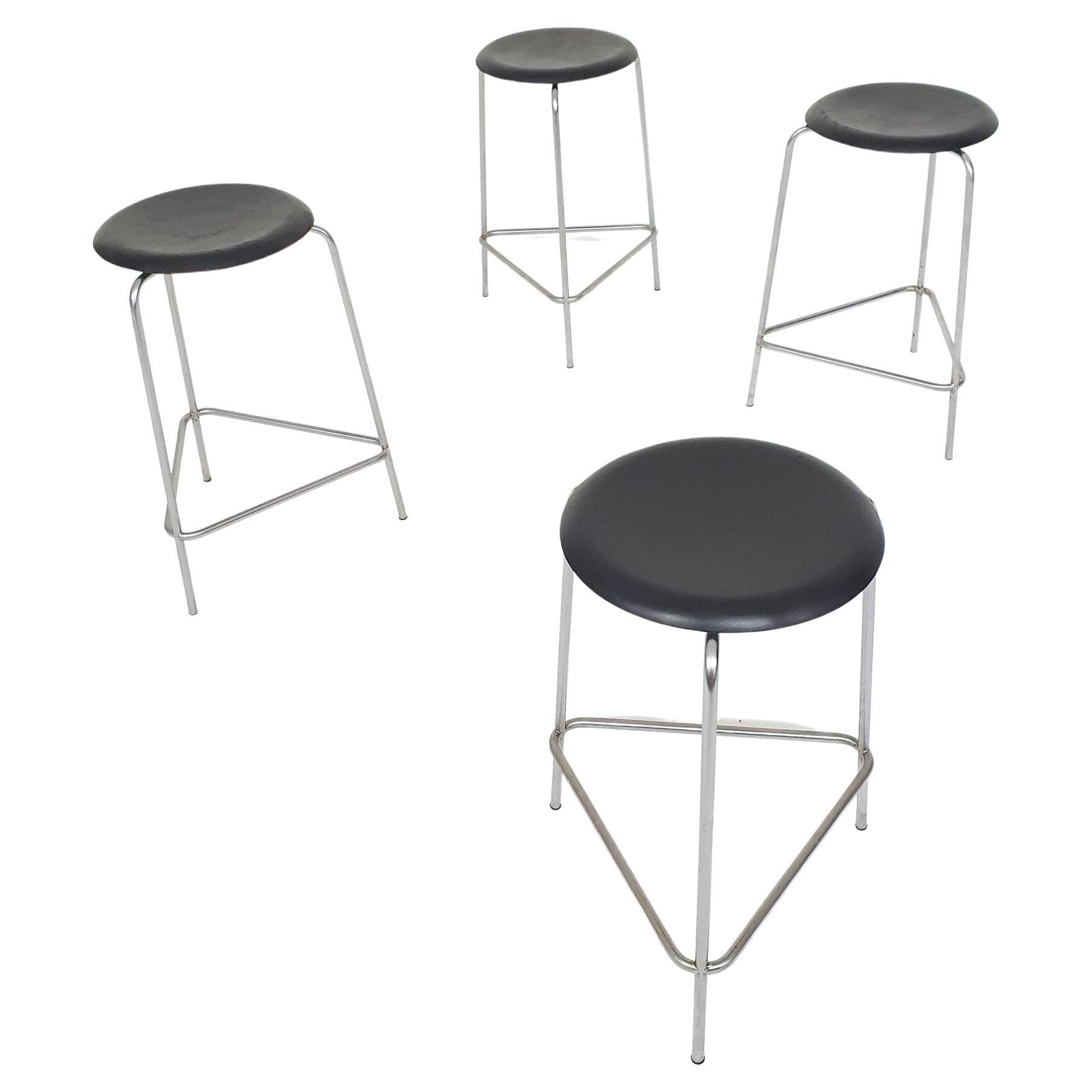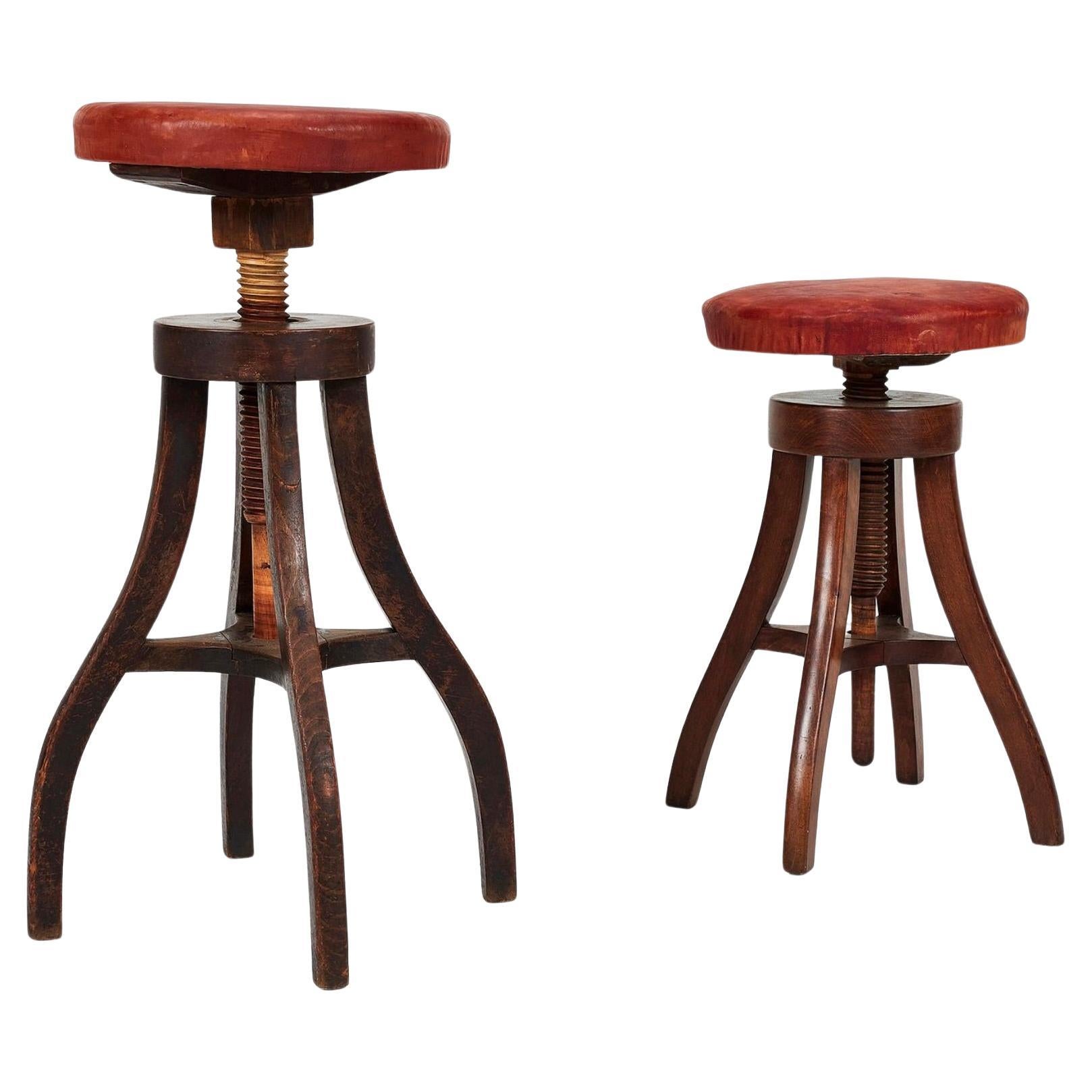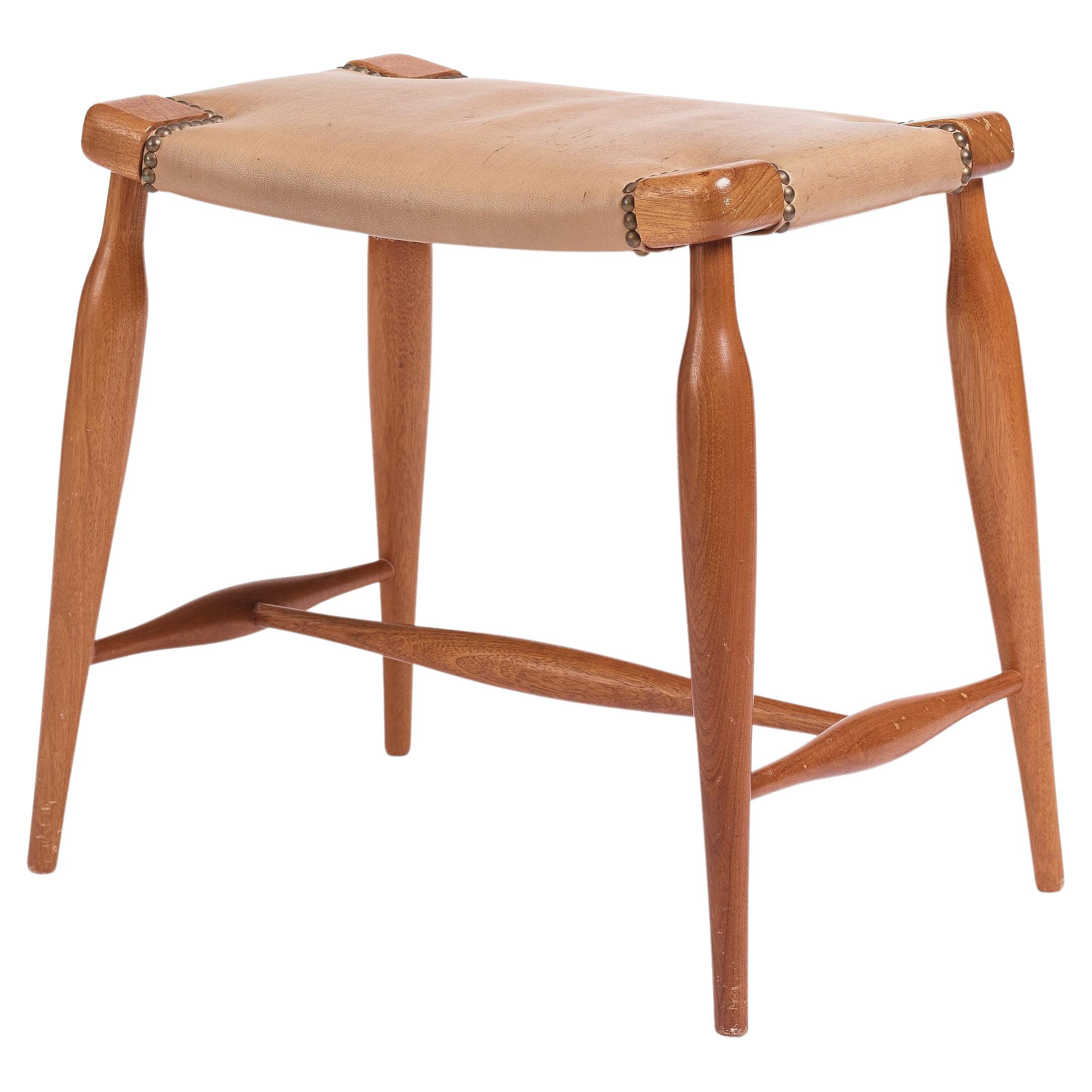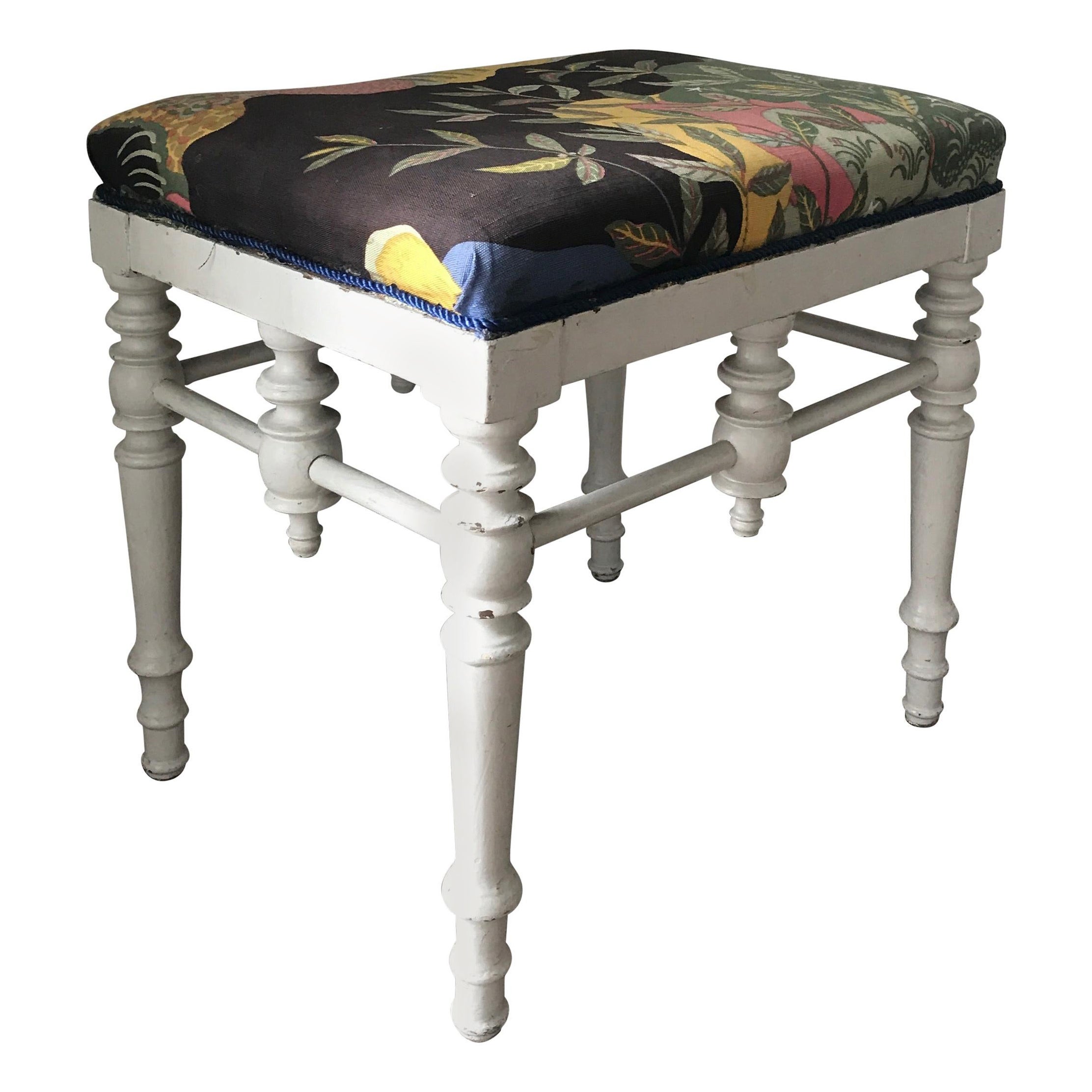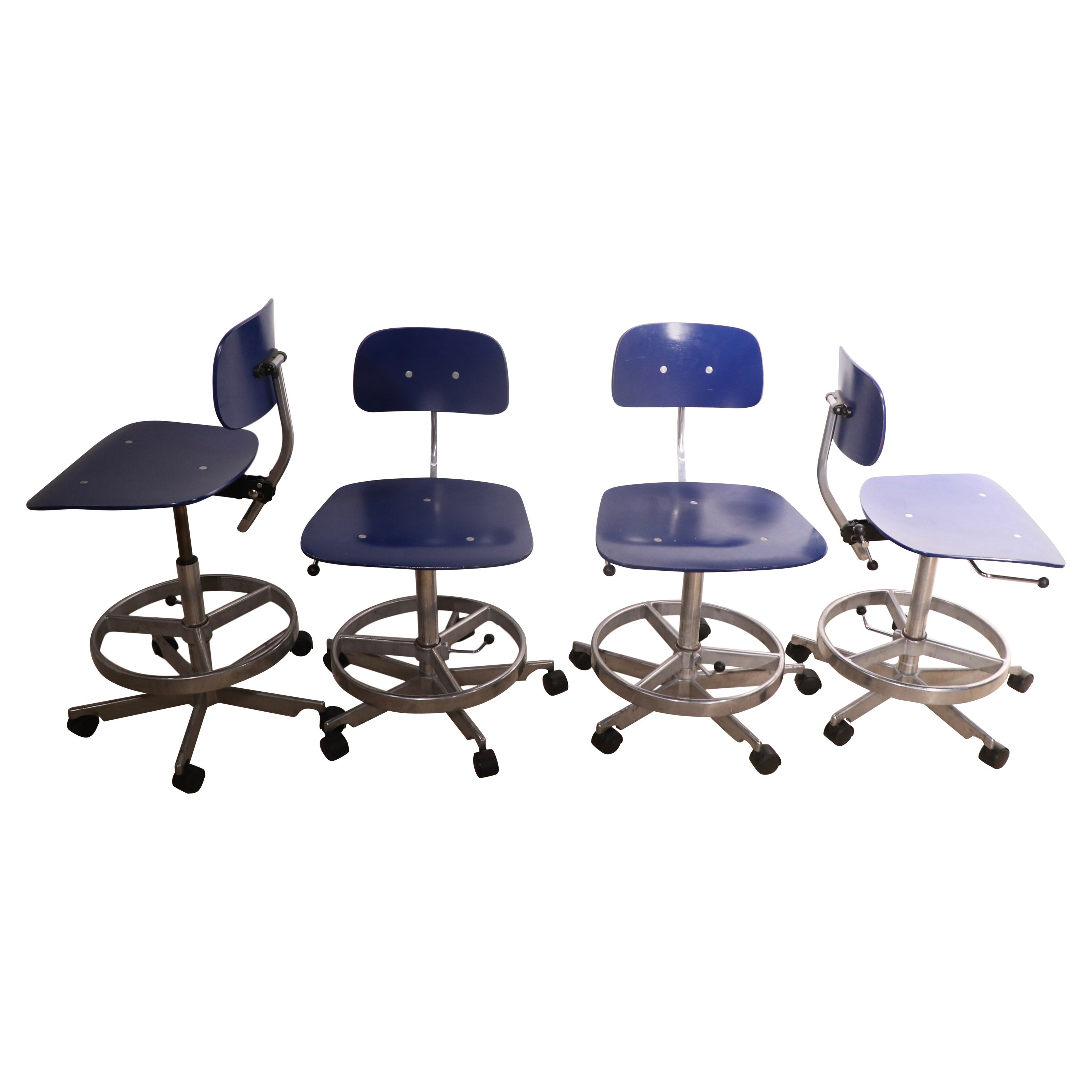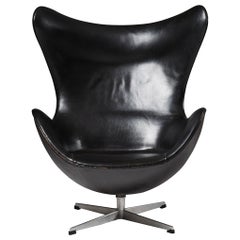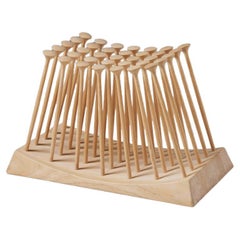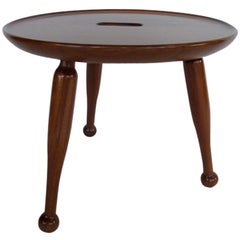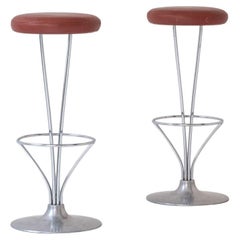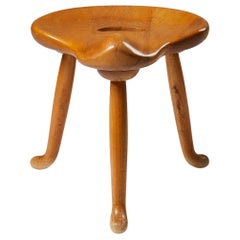
Three Legged Stool, Designed by Josef Frank for Fritz Hansen, Denmark, 1925
View Similar Items
Three Legged Stool, Designed by Josef Frank for Fritz Hansen, Denmark, 1925
About the Item
- Creator:Josef Frank (Designer),Fritz Hansen (Cabinetmaker)
- Dimensions:Height: 14.97 in (38 cm)Width: 15.36 in (39 cm)Depth: 15.36 in (39 cm)
- Style:Scandinavian Modern (Of the Period)
- Materials and Techniques:
- Place of Origin:
- Period:
- Date of Manufacture:1925
- Condition:
- Seller Location:Stockholm, SE
- Reference Number:1stDibs: LU1006618707542
Josef Frank
Austrian architect and furniture and fabric designer Josef Frank was a leading voice for a gentle, humane modernism. His advocacy of warm, comfortable, eclectically styled environments was highly influential in his adopted country of Sweden, and it’s now widely regarded as a harbinger of the backlash against doctrinaire modernism and the embrace of the homespun that occurred in the late 1960s.
The son of a successful Viennese textile manufacturer, Frank studied architecture at Vienna University of Technology, graduating in 1910. From the first years of his practice, he marched counter to the orderly, symmetrical architectural layouts and decors prescribed by contemporaries such as Adolf Loos.
Frank drafted rooms of varying shapes and called for flexible interior-design arrangements. His furniture pieces are light and easy to move — and his chairs are always made of wood, most often with lushly curved steam-bent arms and slatted backs. Frank openly loathed the tubular steel furnishings and “machine for living” aesthetic promoted by Le Corbusier and Ludwig Mies van der Rohe and other Bauhaus principals. “The home must not be a mere efficient machine,” Frank once said. “It must offer comfort, rest and coziness…. There are no puritan principles in good interior decoration.”
Frank — who was Jewish — sensed the dire implications of the rise of Nazism in Germany and Austria, and in 1933 he moved to Stockholm with his Swedish wife, Anna. He became the design chief for the furnishings maker Svenskt Tenn and found a perfect match culturally for his brand of simple, relaxed and bright creations. Like many modernists — notably Charles and Ray Eames and Alexander Girard — Frank had a deep love of folk art, which influenced his designs for a wide array of colorful, richly patterned upholstery fabrics, many based on the classic “Tree of Life” motif.
In all his designs, Frank took inspiration from a broad variety of sources. In his furniture, one can discern traces of Asian patterns, Rococo, Italian Renaissance, Scandinavian handicrafts and even Chippendale pieces. As such, the work of Frank — the friendly modernist — is at home in any type of décor.
Find vintage Josef Frank pillows, armchairs, floor lamps and other furniture on 1stDibs.
Fritz Hansen
When the Copenhagen-based furniture maker Fritz Hansen opened for business more than 140 years ago, the company — which today styles itself The Republic of Fritz Hansen — adhered to the traditional, time-honored Danish values of craftsmanship in woodworking and joinery. Yet thanks to the postwar innovations of Arne Jacobsen and others, Fritz Hansen would become the country’s leader in Scandinavian modern design using new, forward-looking materials and methods.
Fritz Hansen started his company in 1872, specializing in the manufacture of small furniture parts. In 1915, the firm became the first in Denmark to make chairs using steam-bent wood (a technique most familiar from birch used in the ubiquitous café chairs by Austrian maker Thonet). At the time, Fritz Hansen was best known for seating that featured curved legs and curlicue splats and referenced 18th-century Chippendale designs.
In the next few decades, the company promoted simple, plain chairs with slatted backs and cane or rush seats designed by such proto-modernist masters as Kaare Klint and Søren Hansen. Still, the most aesthetically striking piece Fritz Hansen produced in the first half of the 20th century was arguably the China chair of 1944 by Hans Wegner — and that piece, with its yoke-shaped bentwood back- and armrest, was based on seating manufactured in China during the Ming dynasty. (Wegner was moved by portraits he’d seen of Danish merchants in the Chinese chairs.)
Everything changed in 1952 with Arne Jacobsen’s Ant chair. The collaboration between the architect and Fritz Hansen officially originated in 1934 — that year, Jacobsen created his inaugural piece for the manufacturer, the solid beechwood Bellevue chair for a restaurant commission. The Ant chair, however, was the breakthrough.
With assistance from his then-apprentice Verner Panton, Jacobsen designed the Ant chair for the cafeteria of a Danish healthcare company called Novo Nordisk. The chair was composed of a seat and backrest formed from a single piece of molded plywood attached, in its original iteration, to three tubular metal legs. Its silhouette suggests the shape of the insect’s body, and the lightweight, stackable chair and its biomorphic form became an international hit.
Jacobsen followed with more plywood successes, such as the Grand Prix chair of 1957. The following year he designed the SAS Royal Hotel in Copenhagen and its furnishings, including the Egg chair and the Swan chair. Those two upholstered pieces, with their lush, organic frames made of fiberglass-reinforced polyurethane, have become the two chairs most emblematic of mid-20th-century cool. Moreover, the Egg and Swan led Fritz Hansen to fully embrace new man-made materials, like foam, plastic and steel wire used to realize the avant-garde creations of later generations of designers with whom the firm collaborated, such as Piet Hein, Jørn Utzon (the architect of the Sydney Opera House) and Verner Panton. If the Fritz Hansen of 1872 would not now recognize his company, today’s connoisseurs certainly do.
Find a collection of vintage Fritz Hansen tables, lounge chairs, sofas and other furniture on 1stDibs.
- Stool Model 927 Designed by Josef Frank for Svenskt Tenn, Sweden, 1950sBy Josef FrankLocated in Stockholm, SEStool model 927 designed by Josef Frank for Svenskt Tenn, Sweden, 1950s. Mahogany and rattan. Measures: H: 43 cm W: 43 cm D: 28 cm Josef Frank was a true European, he was also a pioneer of what would become classic 20th century Swedish design and the “Scandinavian Design Style”. Austrian- born Frank started his design career as an architect after having trained at the Technische Hochschule in Vienna between 1903 and 1910. After his training he went on to teach at Kunstgewerbeschule (The Viennese School of Arts and crafts) where he developed and espoused the new school of modernist thinking towards Architecture and Design that was coming to fruition in Vienna at the time. He also went on to lead the Vienna Werkbund throughout the 1920s. This was a truly progressive group of Architects and Designers who set about improving the daily lives of Austrian people through modernist design and architecture in partnership with Arts and Crafts ideals and construction. Frank’s leadership of the Werkbund had already cemented his place at the forefront of European design. Frank’s time in Vienna was typified by his design for the “Die Wohnung” exhibition of the Deutscher Werkbund in Stuttgart, 1927 where he exhibited along side his contemporaries at the forefront of design, such as the likes of Le Corbusier and Walter Gropius. Here he showed a specially designed pair of flat-roofed reinforced concrete houses in what is now seen as a typical modernist style. What separated Frank’s house from the other 32 houses of the exhibition was the interior and furniture inside the building. It was described as “Neo-Classical” and filled with an eclectic mix of period pieces, modern design and pieces designed by Frank himself that seemed to cross the two worlds. This was a complete opposite direction to that which his fellow Architects were travelling in with their pared back and angular aesthetics. Frank said of his own work: “The house is not a work of art, simply a place where one lives,” and by this reasoning Frank rejected the regimental mechanisation of the living space that his contemporaries believed in, instead he set about creating congenial and spontaneous interiors. Frank’s practice saw him placing the bright colours and the soft forms of nature back into the furnishings and interiors that he thought modernism sorely mist. Frank, along with Oskar Walch set up Haus und Garten in Vienna in 1925. This was Frank’s first commercial foray into furniture and home furnishings and the company went on to become the most influential furnishing house in Vienna with a riotous depth of colour and interesting shapes becoming the trademark of their design. However this success was to come to an end with rise of Nazism in Vienna in the early 1930’s. Frank was Jewish, and he and his wife Anna decided they would leave Vienna for her motherland: Sweden, in 1933. Frank continued to design for Haus and Garten, visiting Vienna occasionally and designing the pieces that would continue to be the company’s best sellers long after Frank was forced to hand the company over in 1938 after the Third Reich annexation of Austria. When Josef and Anna had moved to Sweden Frank had struck up a working relationship with Design shop owner Estrid Ericson. Ericson was the proprietor of Svenskt Tenn that at this point was a successful interiors shop in Stockholm with the royal warrant of appointment to the Swedish Royal Household. In 1935 Frank had become the chief designer for Svenskt Tenn and had set about putting all of his creative effort into his designs for the company. At the World Expositions in Paris in 1937 and New York in 1939 the world saw for the first time the wealth of products that Frank had been working on, ranging from candlesticks to cabinets, there was not a domestic object that Frank had not subjected to his colourful, comfortable and organic style of Modernism. Frank’s new school of Modernism championed ideas such as chairs having a freeing, open back and that “If one desires the room to be comfortable…all pieces of furniture should allow for a free view of the separating line between the floor and the wall. A cabinet without legs breaks this line and thus reduces the feeling of space.” A world-wide audience tired of classic Modernism’s furniture with solid planes and aggressive forms leapt upon these ideas and Franks natural and bright designs for Svenskt Tenn became internationally desired. Frank created over 2000 designs for Svenskt Tenn and his products continue to be the core of their brand. Frank’s rejections of tubular metal and heavy lacquers within his furniture have insured his unique light form of Modernism continues to influence and flourish today. His natural toned mahogany and walnut pieces along with his tactile leather covered and brightly shaded lighting still bring the forms of nature back into the home. Original Frank pieces are now increasingly rare, highly desirable and are the epitome of “Scandinavian Design”. Renowned Designer and Academic Isle Crawford...Category
Vintage 1950s Swedish Mid-Century Modern Chairs
MaterialsRattan, Mahogany
- Armchair “Egg Chair” Designed by Arne Jacobsen for Fritz Hansen, Denmark, 1958By Arne Jacobsen, Fritz HansenLocated in Stockholm, SEArmchair “Egg chair” designed by Arne Jacobsen for Fritz Hansen, Denmark. 1958. Original leather and aluminium. Very early model with the built up seat, without separate cushion. ...Category
Vintage 1950s Swedish Scandinavian Modern Swivel Chairs
MaterialsSteel
- Stool ‘The Unrockable’ designed by Hans Sandgren Jakobsen for Werner, DenmarkBy Hans Sandgren JakobsenLocated in Stockholm, SEStool ‘The Unrockable’ designed by Hans Sandgren Jakobsen for Werner, Denmark, 2010s. Ash. Stamped.Category
2010s Danish Scandinavian Modern Stools
MaterialsAsh
- Stool designed by Mogens Lassen for K. Thomsen, Denmark, 1942By Mogens LassenLocated in Stockholm, SEStool designed by Mogens Lassen for K. Thomsen, Denmark, 1942. Teak. Stamped. Model presented at The Copenhagen Cabinetmakers' Guild Exhibition at Designmuseum Denmark, 1942. H: ...Category
Vintage 1940s Danish Mid-Century Modern Stools
MaterialsTeak
- Occasional Table Designed by Josef Frank for Svenskt Tenn, Sweden, 1950sBy Josef FrankLocated in Stockholm, SEOccasional table designed by Josef Frank for Svenskt Tenn, Sweden, 1950s. Mahogany. Measurements: H: 60 cm/ 23 1/2'' Length when extened: 104 cm/ 3' 5'' D: 54 cm/ 21 1/2'' Jose...Category
Vintage 1950s Swedish Scandinavian Modern Side Tables
MaterialsMahogany
- Occasional Table Designed by Josef Frank for Svenskt Tenn, Sweden, 1950sBy Josef FrankLocated in Stockholm, SEOccasional table designed by Josef Frank for Svenskt Tenn, Sweden. 1950s. Mahogany. H: 45 cm L: 80 cm D: 40 cm Josef Frank was a true European, he was also a pioneer of what would become classic 20th century Swedish design and the “Scandinavian Design Style”. Austrian- born Frank started his design career as an architect after having trained at the Technische Hochschule in Vienna between 1903 and 1910. After his training he went on to teach at Kunstgewerbeschule (The Viennese School of Arts and crafts) where he developed and espoused the new school of modernist thinking towards Architecture and Design that was coming to fruition in Vienna at the time. He also went on to lead the Vienna Werkbund throughout the 1920s. This was a truly progressive group of Architects and Designers who set about improving the daily lives of Austrian people through modernist design and architecture in partnership with Arts and Crafts ideals and construction. Frank’s leadership of the Werkbund had already cemented his place at the forefront of European design. Frank’s time in Vienna was typified by his design for the “Die Wohnung” exhibition of the Deutscher Werkbund in Stuttgart, 1927 where he exhibited along side his contemporaries at the forefront of design, such as the likes of Le Corbusier and Walter Gropius. Here he showed a specially designed pair of flat-roofed reinforced concrete houses in what is now seen as a typical modernist style. What separated Frank’s house from the other 32 houses of the exhibition was the interior and furniture inside the building. It was described as “Neo-Classical” and filled with an eclectic mix of period pieces, modern design and pieces designed by Frank himself that seemed to cross the two worlds. This was a complete opposite direction to that which his fellow Architects were travelling in with their pared back and angular aesthetics. Frank said of his own work: “The house is not a work of art, simply a place where one lives,” and by this reasoning Frank rejected the regimental mechanisation of the living space that his contemporaries believed in, instead he set about creating congenial and spontaneous interiors. Frank’s practice saw him placing the bright colours and the soft forms of nature back into the furnishings and interiors that he thought modernism sorely mist. Frank, along with Oskar Walch set up Haus und Garten in Vienna in 1925. This was Frank’s first commercial foray into furniture and home furnishings and the company went on to become the most influential furnishing house in Vienna with a riotous depth of colour and interesting shapes becoming the trademark of their design. However this success was to come to an end with rise of Nazism in Vienna in the early 1930’s. Frank was Jewish, and he and his wife Anna decided they would leave Vienna for her motherland: Sweden, in 1933. Frank continued to design for Haus and Garten, visiting Vienna occasionally and designing the pieces that would continue to be the company’s best...Category
Vintage 1950s Swedish Scandinavian Modern Tables
MaterialsMahogany
- Fritz Hansen Three Legged Stool by Josef Frank in Elm Wood, 1945, DenmarkBy Josef Frank, Fritz HansenLocated in Odense, DKRare and important stool made at Fritz Hansen, Copenhagen in the 1930s and attributed to Josef Frank. The stool is made of a carefully selected piece of elm wood and handmade by a ca...Category
Vintage 1940s Danish Scandinavian Modern Stools
MaterialsElm
- Josef Frank Three Legged StoolBy Josef FrankLocated in St.Petersburg, FLA charming, three legged stool, Josef Frank for Svenskt Tenn, Sweden.Category
Vintage 1940s Swedish Stools
MaterialsCherry
- Set of Two Bar Stools by Piet Hein for Fritz Hansen, Denmark, 1960sBy Fritz Hansen, Piet HeinLocated in Antwerp, BELovely set of two bar stools by Piet Hein for Fritz Hansen, Denmark, 1960s. These stools have chrome-plated frames and a brushed aluminum base with its original leather upholstery. O...Category
Vintage 1960s Danish Scandinavian Modern Stools
MaterialsAluminum
- First Edition Pair ‘Dot’ Stools by Arne Jacobsen for Fritz Hansen, Denmark 1960sBy Arne Jacobsen, Fritz HansenLocated in Antwerp, BEFirst edition pair ‘DOT’ stools by Arne Jacobsen for Fritz Hansen, Denmark 1960s. This three legged stool features nickel plated metal legs with teak seat top. Presented in its origi...Category
Vintage 1960s Danish Scandinavian Modern Stools
MaterialsMetal
$1,056 Sale Price / set20% Off - Set of 4 Piet Hein Bar Stools for Fritz Hansen, DenmarkBy Piet Hein, Fritz HansenLocated in Miami, FLSet of 4 Piet Hein Bar Stools for Fritz Hansen from 1980. Seats were recovered in beautiful fabric. Ready for a new home.Category
Vintage 1980s Danish Modern Stools
MaterialsAluminum, Chrome
- Set of Two Stools by Piet Hein for Fritz Hansen, Denmark, 1960sBy Fritz Hansen, Piet HeinLocated in Praha, CZ- shortened to the classic seat height - marked by labelCategory
Vintage 1960s Danish Mid-Century Modern Stools
MaterialsMetal, Aluminum
